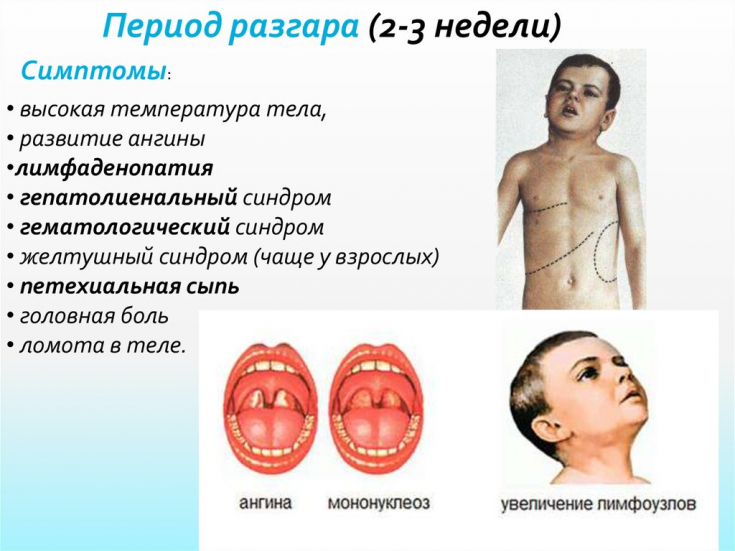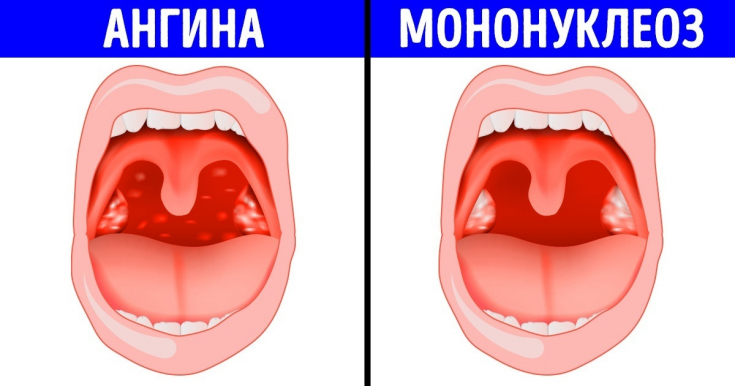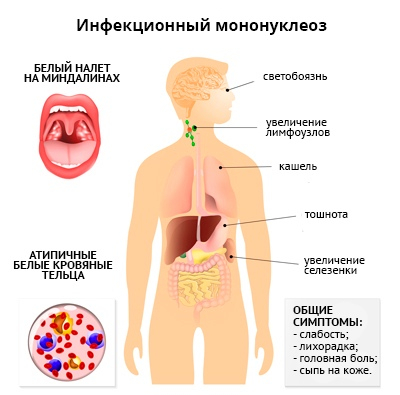Epstein-Barr virus is a double-stranded DNA virus belonging to the herpes virus family and is the main cause of infectious mononucleosis.
Symptoms of infectious mononucleosis, also known as glandular fever, usually appear 4 to 7 weeks after the incubation period and include fever, lymphadenopathy, and pharyngitis.
Find out at estet-portal.com how to recognize infectious mononucleosis and protect yourself from severe viral complications.
Prevalence of Epstein–Barr virus
It has long been known that the Epstein-Barr virus is involved not only in the development of infectious mononucleosis, but also in other diseases, such as lymphoproliferative diseases, chronic fatigue syndrome, systemic lupus erythematosus, multiple sclerosis, and other autoimmune diseases.
Follow us on Instagram!
Epstein-Barr virus is estimated to be associated with about 200,000 malignancies worldwide each year, which has led to growing interest in a vaccine against the virus.
Ganciclovir in the treatment of cytomegalovirus infection
Physicians encounter Epstein-Barr virus disease mainly in children and adolescent patients. Every year, doctors diagnose such diseases in millions of people and give advice on treatment, including limiting physical activity. Quite a few cases require additional diagnosis and treatment due to complications of mononucleosis.
Thus, physicians need to be able to recognize the signs of infectious mononucleosis, make a differential diagnosis, assess the risks of complications, and make recommendations for each patient.
Mechanism of transmission of infectious mononucleosis
90% of cases of infectious mononucleosis are caused by Epstein-Barr virus, the remaining 10% − cytomegalovirus, herpes simplex virus type 6 and herpes simplex virus type 1. The Epstein-Barr virus is found in saliva and is therefore transmitted through kissing, sharing food, etc. Virus levels peak in saliva during the acute phase of mononucleosis, and patients can be highly contagious up to 180 days after symptom onset.

The incubation period lasts approximately 6 weeks, which subsequently causes the clinical picture of infectious mononucleosis or leads to latent infection in the affected B-lymphocytes and is associated with various EBV-associated lymphoproliferative conditions, such as Hodgkin's lymphoma and Burkitt's lymphoma.
Swollen cervical lymph nodes: correct diagnosis
Clinical presentation of infectious mononucleosis
The symptoms of infectious mononucleosis depend on the patient's age. Young children rarely develop clinical signs of infectious mononucleosis, while up to 70% of adolescents and adults have the classic triad of symptoms lasting approximately 2 to 4 weeks of fever, pharyngitis, and cervical lymphadenopathy with lymphocytosis.
Common manifestations of infectious mononucleosis are white exudate on the tonsils, sometimes even covering the tongue, as well as petechiae on the palate, which have been reported in 50% of cases, hepatosplenomegaly and hepatitis.

In about 75% of cases, there is an increase in the level of alanine aminotransferase (ALT) in the blood, and in about 5-10% of cases, jaundice may occur due to diffuse damage to the liver parenchyma. Splenomegaly may not be noticeable on physical examination, but ultrasound assessment of the size of the spleen in acute infectious mononucleosis confirms that all patients develop varying degrees of splenomegaly.
It is recommended that patients with infectious mononucleosis limit physical activity for 1 month after the onset of symptoms to reduce the risk of splenic rupture.
Thus, "classic" a patient with uncomplicated infectious mononucleosis has fever, pharyngitis, cervical lymphadenopathy, lymphocytosis, petechiae on the palate, hepatosplenomegaly with elevated ALT.
Specific diagnosis of mononucleosis
The next step in diagnosing infectious mononucleosis should be a complete blood count, as well as a test for heterophile antibodies. About 85% of patients with Epstein-Barr virus-associated infectious mononucleosis will have a positive test for heterophile antibodies, but the number may not exceed their level of detection during the first week of symptoms. This phenomenon could lead to a false negative rate of 25% of cases during this period.

However, the heterophile antibody test has high sensitivity and specificity and is considered the best initial diagnostic test for infectious mononucleosis, but approximately 10% of patients with infectious mononucleosis are negative.
In these cases, in the acute phase, the test for antibodies to the Epstein-Barr virus capsid antigen (VCA) IgM is of diagnostic value. Additional testing for antibodies to EBV nuclear antigen (Epstein - Barr Virus Nuclear Antigen - EBNA) can help distinguish between acute and chronic infection. Tests for antibodies to VCA and EBNA have higher sensitivity and specificity.
Jaundice Syndrome in Infectious Diseases: Causes and Diagnosis
There is currently no specific treatment for infectious mononucleosis. Symptomatic therapy is recommended to improve the condition, analgesics, antipyretics, plenty of fluids and rest are also prescribed.
In a Cochrane review, scientists concluded that the effectiveness of antiviral agents (acyclovir, valaciclovir) in acute infectious mononucleosis does not yet have a sufficient evidence base.
Infectious mononucleosis: modern methods of diagnosing the disease







Add a comment